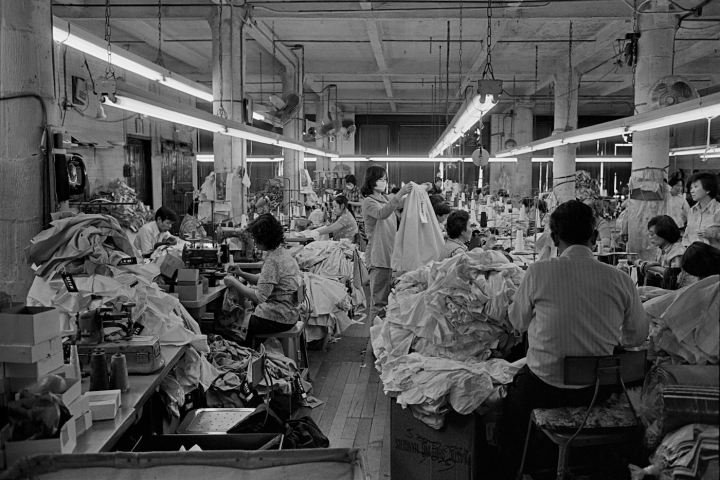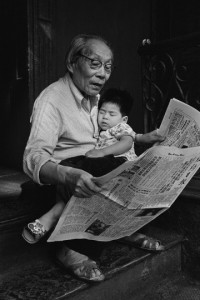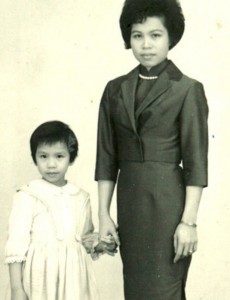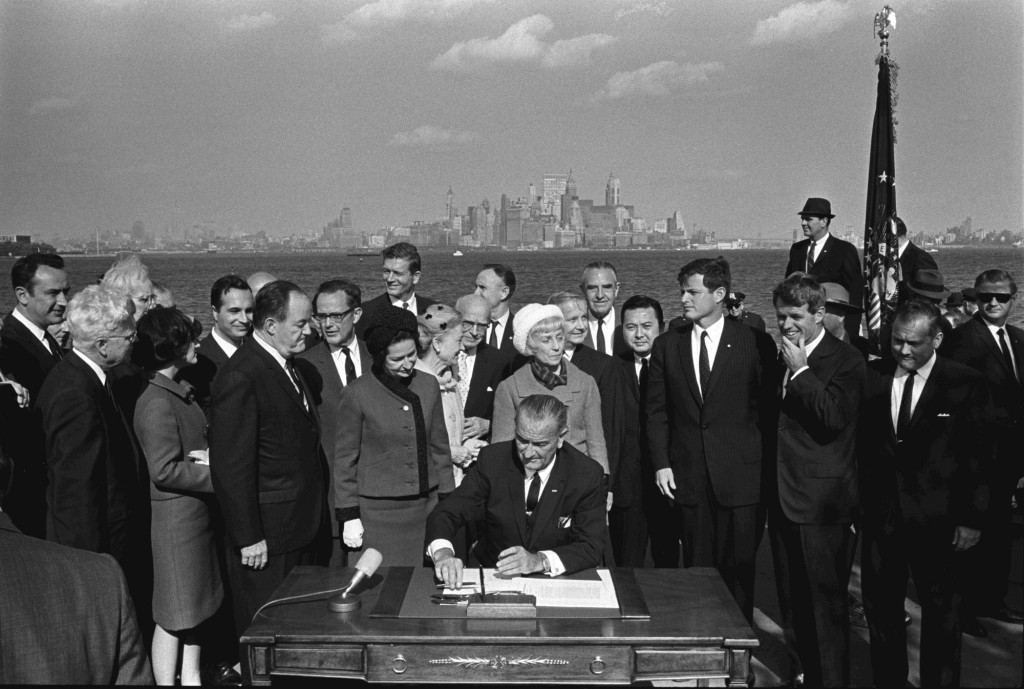Blog Archive
Look For the Union Label: Chinese Immigration in America
For the other parts of this series highlighting the new ethnic groups featured in Under One Roof, you can read Becoming “Nuyorican” and Of Memory and Survival: The Jewish American Identity

Garment factory in NYC’s Chinatown, 1983. Photo: Bud Glick
May is Asian/Pacific Heritage Month, marking the considerable contributions made by Asian- Pacific Americans in the arts, sciences, technology, politics and more, as well as celebrating the immense and richly layered cultures of those Asian and Pacific Island countries.
May 6 is also the 135th anniversary of the Chinese Exclusion Act, signed into law in 1882 by President Chester A. Arthur. This is the only non-wartime federal law which discriminates against an entire nationality, and has had lingering side effects to this day.
The law was passed because of rising Anti-Chinese sentiment sweeping through the United States, and the reasons for that are not all that unfamiliar to what other ethnic groups dealt with in the past, and what they deal with today. Originally, Chinese laborers came to the west coast during the Gold Rush of the 1840s and 1850s. They were hired to help construct the Central Pacific Railroad, but once it was completed, and the gold mines had all but dried up, many Chinese immigrants stayed in the U.S., taking other labor jobs for less money, wanting to provide for their families back home. Of course, this led to that familiar xenophobic rhetoric – they’re taking our jobs, and they refuse to assimilate to American culture.
The Chinese Exclusion Act did exactly as it said it would. It banned the immigration of anyone from China who didn’t have a special work permit, including the families of those already living in the U.S. Beyond that, those who were already here were unable to become naturalized citizens. Many Chinese at this time were experiencing discrimination and violence in those small towns of the west. So of the few immigrants left in the country, many migrated East to denser cities like New York, places with much higher diversities. Today, the metropolitan area of New York is home to the largest ethnic Chinese population outside of Asia.

Photo: Bud Glick
During the ban, only immigrants with specialized work permits were allowed in the country, those who were listed as merchants on documentation. So many enterprising immigrants started businesses with friends and family as partners, to allow them to travel to the U.S. — businesses like restaurants, laundromats, and garment factories, which are often still owned by Chinese American families.
New York’s garment industry is almost synonymous with the city’s immigrant history. Prior to the first major wave of immigrants in the mid-19th century, clothing was typically made in the home, or custom-made by tailors for the upper class. But fashions evolved and expanded, and an influx of skilled craftsmen coming into the country created a confluence of events, whereby 1910, an estimated 70% of clothing worn by American women originated in the garment factories of New York City.
In 1943, a repeal of the Chinest Exclusion Act allowed a small quota of Chinese immigrants into the country, in part due to China being a U.S. ally during World War II. Before, the Chinese population in America had steadily declined since 1882, but it was now starting to rise again, albeit at a much slower pace. In 1965, the Immigration and Nationality Act, also known as the Hart-Cellar Act, was signed by President Lyndon B. Johnson, and it officially lifted the quota, but still placed caps on per-country and total immigration across the board. Even so, the population of immigrants, especially Chinese immigrants, skyrocketed over the next few decades, and the quota was eventually removed altogether in 1968.
It was in 1965 when the Wong family, highlighted on our new tour Under One Roof, moved to the Lower East Side. Around the same time, the garment factories had diminished in the city, with much of production being outsourced to other places with cheaper manufacturing costs. But adapting Chinese entrepreneurs created a niche market in New York City, and developed factories that could reproduce high-demand clothing found in Manhattan department stores and have them on the shelves in a matter of days. A few years after moving to the United States, Mrs. Wong would be one of the thousands of immigrants working in New York City’s garment industry.
The garment factories are an integral part of the recent history of Chinese American immigrants. On our new tour at 103 Orchard Street, visitors will step into a recreated, interactive garment factory instillation. They will learn about how Mrs. Wong, along with some 20,000 other Chinese immigrants, developed communities over their sewing machines. It was where they brought their children after school, and where they spent most of every day. It was where they took a fierce pride in the quality and speed of their work, and took part in strong Labor Unions, such as the International Ladies’ Garment Workers Union, to ensure fairness for themselves and their colleagues.
The garment factory is a representation of the Chinese immigrant experience in New York City during the latter half of the 20th century. It encompasses the culture – family, food, work ethic, values – of their communities while displaying the advancement of technology and the integration of American culture into their own. You will be able to visit our garment factory in our new exhibition, Under One Roof, slated to open this fall.
- Post by Gemma Solomons, Marketing & Communications Coordinator at the Lower East Side Tenement Museum

